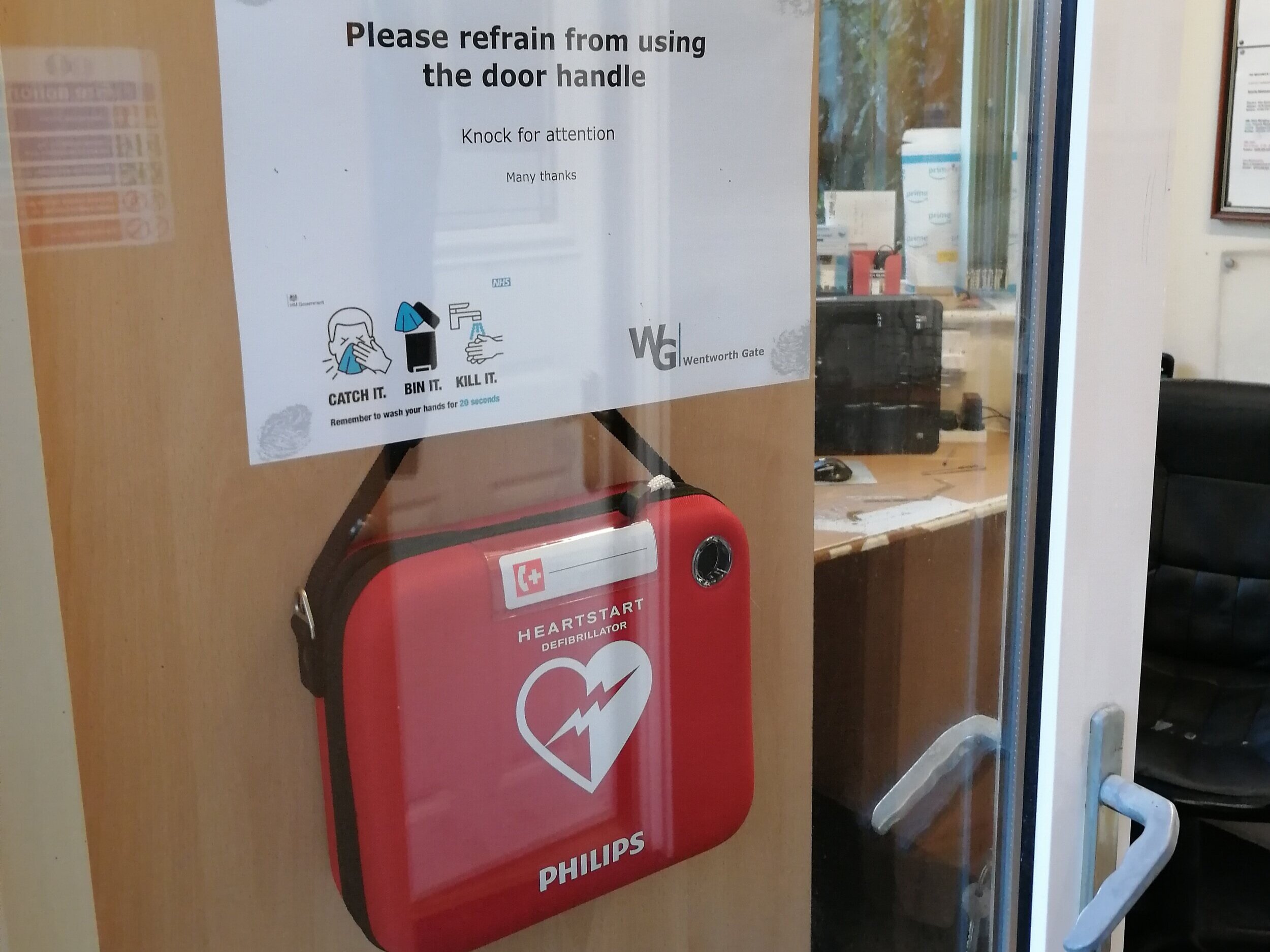Defibrillators for Blocks of Flats
It’s safe to say that our eyes have been opened during this coronavirus crisis as to how many people in society are vulnerable, especially the elderly.
Our parents, our grandparents, uncle and aunts – we have been extra aware of their health these past few months. What has been enormously touching, is the way society has pulled together to support the NHS, especially its frontline staff who are most at risk of significant viral loads. Aside from the quite phenomenal efforts of Captain Tom Moore who turned 100 the day I wrote this blog, the country has been finding ingenious ways to provide those at greater risk of contracting Covid-19 with PPE visors fabricated on 3D printers.
Last year, I begun to look at another way the general public can help to save lives, and in the month just gone, a defibrillator has been installed at one of the sites where Cledor provides the concierge team. I am proud to say we instigated this initiative, broaching the idea with the property manager due to the mature demographic of the development, and arranging professional training on the defibrillator for the staff – which many residents also joined. The fact that so many residents wished to be trained too was uplifting and helped to great an ever-closer sense of community spirit.
In this blog, I pose some questions that property managers are likely to ask when considering installing a defibrillator – and answer them.
What is defibrillation and what does a defibrillator do?
Defibrillation is a medical technique used in emergency treatments to halt ventricular fibrillation (erratic heart beats, a common cause of cardiac arrest) or pulseless ventricular tachycardia (ineffective contractions leading to heart failure). In simpler terms, defibrillation applies a controlled electric shock to a patient to help restore the heart’s normal rhythm. In effect, an electric shock to the heart may actually stop it, giving it the chance to reset. Here is an image of St John Ambulance staff during defibrillator training.
Aren’t defibrillators only to be used by trained medical professionals?
That is a common misconception, but of course if someone present is medically trained, I am sure they would take the lead. Now that I have undergone automated external defibrillator (AED) training myself, I now realise that you don’t need to worry about getting it wrong or causing more harm as the machine is analysing the heart rhythms of the patient. The AED gives you audible instructions and also visual aids to take you through the process step by step, like the wonderful St John Ambulance demonstrate in this video.
What is their success rate?
In 2017, the National Institute for Health Research stated on their website following a specific study: “Providing a shock using a defibrillator to people with out-of-hospital cardiac arrest before the arrival of emergency medical services increases their chance of survival”. Bystander assistance performing CPR and attaching a defibrillator gives the casualty a far higher chance of survival – about 32% will survive compared to only 8% if no defibrillator is used. If a defibrillator is available and is used fast, then lives are saved, so on-site staff, members of the public and residents can be given the chance to save a life. “Each minute of delay to defibrillation is estimated to reduce by 10% the probability of long-term survival after ventricular fibrillation cardiac arrest”.
I am surprised by how small the device appears in the St John Ambulance picture above. Are they unsightly?
Defibrillators are very compact. They can sit in a wall cabinet like this one, so most residential blocks of flats should be able to accommodate one, in or around the lobby area.
It’s a legitimate concern about their visual impact on the common parts as some residents may complain. AEDs don’t, of course, need to visible to all, however if they are hidden away, they may become out of sight and out of mind. Do you think this example below is unsightly? Choosing where to install the cabinet will be important to some residents, so you would need to have a think about this.
What much does a defibrillator cost, and is it a valid service charge expense?
The validity of the cost of a defibrillator is something you’ll have to satisfy yourself. I doubt many leases would be sufficiently detailed to mention medical devices – just as a 50 year-old lease still in place would be unlikely to have anticipated fire alarm systems in most residential buildings. My view is that residents are unlikely to complain about something that could save someone’s life.
An automatic external defibrillator costs around £1500/£2000 including a cabinet, but prices vary widely. We can purchase AEDs on your behalf, organise staff training to use them and even invite residents to join the training too.
Is ongoing maintenance of the defibrillator needed?
Not really. AEDs have a shelf life of around 5-8 years, unused. If used, they are capable of a few hundred uses, so whilst you are unlikely to have to worry about its battery life, the electrode pads and other consumable items would need to be replaced. This is easily organised.
It seems like a very good idea to install these in all our larger residential sites. I see defibrillators in shopping centres, some offices, leisure centres and in schools, so I am guessing not a lot of training is needed. So why not in common parts?
Exactly. It’s common to see what the medical sector calls Public Access Defibrillators (PAD) in areas that bystanders can help save a life. As reaction times can be critical when someone is suffering a heart attack, if your on-site staff are trained to use a defibrillator, they can administer help without hesitation. And even when your concierge or estate manager is off-duty and in a public place, they would be far more likely to spring into action given they have receiving the necessary training.
Is installing a defibrillator at my residential developments a legal requirement?
Having a defibrillator fitted in a block of flats is not a legal requirement however, heart charities are recommending they are installed in areas where there are people who can make use of them. With an estimated 80% of people suffering from a sudden cardiac arrest in public places (and out of hospital) every year in the UK, many of these occur in or close to a block of flats. Having one installed in the common areas could increase the survival rate of someone suffering a cardiac arrest by over 50%.
I’ve got a few other questions. These can be covered off during training?
Yes. We organise emergency first aid training for ours and the managing agents’ on-site staff and trainers will answer all the questions you may have – such as the risks of using defibrillators on children or pregnant women. Incidentally, these devices won’t deliver a shock unless they need to, so there is very little reason to hesitate.
I hope my blog has been helpful, and has encouraged you to look into installing defibrillators for the residential buildings you manage. This is a subject close to my heart (if you pardon the pun), so please feel free to call me for further information.
I’ll leave you with this: “If a defibrillator is administered within the first minute of collapse, survival rate can be as high as 90%. With every minute that passes without defibrillation however, survival rates can reduce by 7 to 10% and if delayed by more than five minutes, the survival rate can be lower than 5%.”
Nick Regnier



